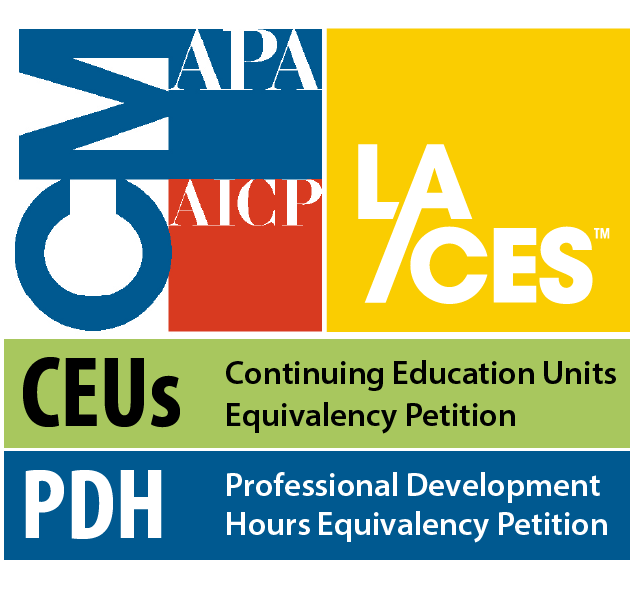Leverage arts and culture to engage, revitalize and reshape communities. Creative placemaking is as much about “doing” as it is about planning, engaging the power of diverse partnerships and hands-on participation to turn under-appreciated assets into focal points for a new community vitality. Learn how to use the Creative Placemaking process to identify and leverage overlooked assets in your community, highlight and deepen your community’s unique character, integrate arts and culture into planning, expand participation for greater equity, and engage creativity and local knowledge to make your community a great place to live, work, play and visit.
Use the special discount code "TrailSkills" to save 15% on registration.
Three 2-hour video conference sessions
TUESDAYS, OCT. 1-15, 2024 • 9-11 PT/12-2 ET + OPTIONAL Q&A OCT. 29
Make the most of creativity in your community. Creative Placemaking leverages arts and culture to engage, revitalize, and reshape communities.
Creative Placemaking is as much about “doing” as it is about planning; leveraging the power of diverse partnerships and hands-on participation to turn under-appreciated assets into focal points for a new community vitality. Whether focused on an art walk, a community design process, public art, outdoor theatre, integrating creative strategies into community engagement and planning, celebrating community cultural heritage and historic preservation, or another endeavor, the Creative Placemaking process adds arts and culture to your community well-being and economic development toolkit.
Community spaces like streets, parks, buildings, facades, sidewalks, and vacant lots are the context for our shared life. These spaces can profoundly influence the strength and breadth of the bonds, trust, and networks that underpin community resilience. These bonds become especially important in the face of uncertainties, disasters, and emergencies, but they are at the heart of how communities function even in the best of times. Identifying and creatively capitalizing on these underutilized assets can build this “social capital” and spark a new community spirit—boosting vitality, supporting economic recovery and growth, and getting people out, moving, and connecting with each other—pandemic or no pandemic.
In this course, you will learn how to use the Creative Placemaking process to identify and leverage overlooked assets in your community, highlight and deepen your community’s unique character, integrate arts and culture into planning, expand participation for greater equity, and engage creativity and local knowledge to make your community a great place to live, work, play and visit.
WHY USE CREATIVE PLACEMAKING? HERE’S WHAT SOME FORMER STUDENTS HAVE TO SAY:
A service club leader said, “This course made me look at the spaces in my community with fresh eyes.”
One librarian said Creative Placemaking is in perfect alignment with the connecting role that rural libraries and librarians play.
One community-based organization turned to Creative Placemaking because “the usual approaches to planning are so boring.”
A state economic development officer said creative placemaking is the way their state will succeed in the recovery from COVID-19, “through giving voice to the community and community-led design, integrating arts and culture and making a place where people want to live, want to work, and want to play.”
A rural community cultural leader uses Creative Placemaking to help herself look at her “surroundings in different ways, comparing and contrasting neighborhoods, being more aware of communities, and being more involved in public policies.
LEARNING OBJECTIVES
1. Foundations of Creative Placemaking
Understand the concept of Creative Placemaking and its role in fostering vibrant, sustainable, equitable, and economically successful communities.
2. Implementation and Collaboration Strategies
Identify specific strategies for fostering artist/community collaborations.
Learn how to assemble a robust cross-sector planning and implementation team.
Identify community problems and challenges suitable for a Creative Placemaking approach.
3. Community Engagement and Integration
Learn effective approaches to engage the community in mapping assets, including hidden or under-appreciated ones.
Explore creative "doing" approaches for community projects.
Learn how to integrate arts and culture into planning.
4. Funding and Promotion
Develop skills to identify and tap into funding sources for Creative Placemaking initiatives.
Identify ways to market, promote, and derive benefits from the unique aspects of your community and Creative Placemaking projects.
COURSE INSTRUCTOR
Michele Archie is a principal of The Harbinger Consultancy. She brings 30 years of experience with community engagement and community economic development in rural communities across the West and throughout the country to this course. Michele also leads Harbinger’s work with Geotourism and related projects that help regions create shared identities, deepen community well-being, and tell their unique stories. She is affiliated with the Western Community Assessment Network and the National Geotourism Council.
FEES & DETAILS
Every class will be presented live and available for replay in case you need to miss a session or want to review.
$525 regular course fee/$425 early registration discount through May 31, 2024
Group rates for two or more participants from the same organization or community — $425 per person regular group rate/$375 early registration discount
Learn more, including a session-by-session summary at the webpage listed.
Trail Competencies
Learning Credits and CEUs

Learning credits will be available to attendees and are included in the registration fee. The length of the session will determine the number of hours/credits given. In order to obtain credits, attendees must fill out an evaluation survey for each session they attend, as well as complete a learning credit tracking form noting each session they are requesting credits for (or a quiz if virtual). This form (and complete instructions) will be available online as well at registration. Email the conference host or [email protected] with any questions.
American Trails is a certified provider and can offer the following learning credits and continuing education opportunities: AICP CM, LA CES (most HSW approved), NRPA CEU Equivalency Petition, and CEU/PDH Equivalency Petition for other accepting organizations.
You may also like
Related Upcoming Trainings
This training has been viewed 381 times.